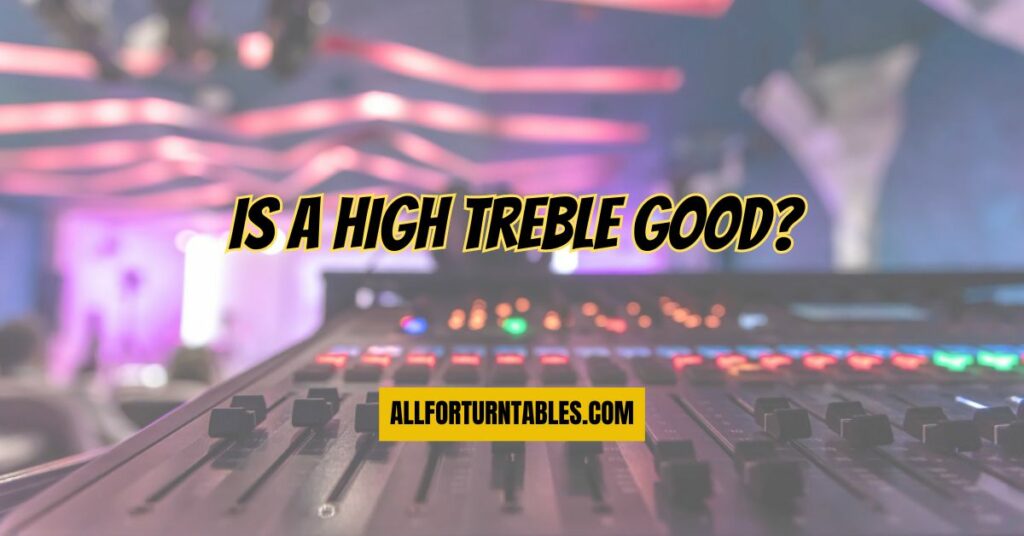In the world of audio, striking the perfect balance is an art. High treble, responsible for the sparkle and clarity in your sound, can be a double-edged sword. While it adds vibrancy to your music and enhances detail, it raises the question: Is high treble bad for your speakers? In this comprehensive guide, we’ll explore the complex relationship between high treble and your speakers, the potential risks involved, and how to protect your audio equipment while enjoying a fantastic listening experience.
The Treble Spectrum
To understand the potential impact of high treble on your speakers, let’s first grasp the fundamentals of treble and its role in audio:
- Treble: Treble refers to the high-frequency sounds in the audio spectrum, typically ranging from 2,000 Hz to 20,000 Hz. It’s responsible for adding clarity, detail, and brilliance to your sound, enriching subtleties like the shimmer of cymbals, the crispness of vocals, and the intricacies of guitar strings.
Treble is the magic that makes your audio come alive, enhancing your listening experience with vibrancy and precision.
The Pros of High Treble
- Clarity and Detail: High treble delivers exceptional clarity and detail to your audio. It allows you to appreciate the subtleties in music, hear the shimmer of cymbals, catch the delicate nuances in vocal performances, and savor the intricacies of musical instruments.
- Enhanced Presence: High treble imparts a sense of presence and brilliance to your sound. It makes your audio more vibrant and engaging, drawing you into the music or content you’re enjoying.
- Genre and Content Suitability: High treble can be particularly beneficial for certain music genres and content types. It excels with genres that rely on intricate details and clarity, such as classical, jazz, and acoustic music.
The Risks of Excessive High Treble
While high treble can elevate your listening experience, it’s essential to be aware of the potential risks and drawbacks, especially for your speakers:
- Speaker Fatigue: Prolonged exposure to excessive high treble can lead to fatigue and discomfort for your speakers. The sharp, high-pitched tones can strain the speaker components over time.
- Distortion: Pushing treble to extreme levels can result in distortion and clipping. This distortion not only affects the sound quality but can also damage your speakers if it occurs frequently.
- Overheating: Speakers that are subjected to prolonged periods of high treble may generate excess heat due to the strain on the diaphragm. This heat can lead to premature wear and tear of speaker components.
Protecting Your Speakers
To enjoy high treble without jeopardizing your speakers, consider the following precautions:
- Equalization Settings: Most audio systems and devices offer equalization settings. Start with a neutral or flat setting and make gradual adjustments to the treble to suit your preferences. Avoid extreme settings that may lead to distortion.
- Monitoring Volume: Be mindful of the volume at which you’re listening to high-treble content. Listening at excessive volumes can exacerbate the risk of distortion and speaker damage.
- Quality Equipment: Invest in high-quality speakers that can handle a broad range of frequencies, including high treble, without strain. Quality speakers are less likely to experience distortion and damage.
- Regular Maintenance: Keep your speakers well-maintained by cleaning them and checking for signs of wear or damage. This can prolong their lifespan and ensure they continue to deliver high-quality sound.
Is high treble bad for your speakers? It can be, but only if it’s taken to extremes. High treble, when used in moderation and with care, can provide exceptional audio clarity and detail. The key is to strike a balance between enjoying the brilliance of treble and safeguarding your speakers from potential risks.
In the world of audio, balance is essential, and high treble is just one piece of the puzzle. By understanding its role and potential effects on your speakers, you can create an audio experience that’s both engaging and protective of your valuable audio equipment. So, as you fine-tune your treble settings, remember that the magic of audio lies in the harmony and balance of its elements, with treble adding the perfect touch of brilliance to your listening experience while keeping your speakers safe and sound.


